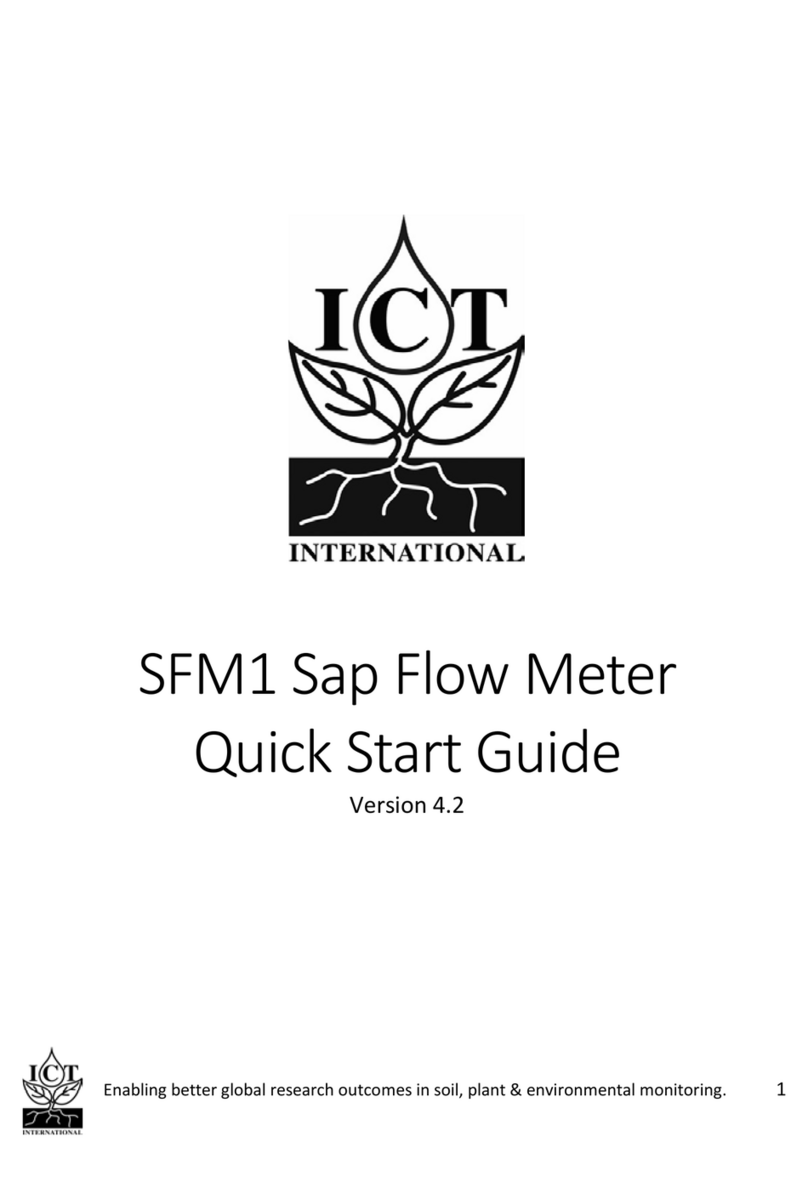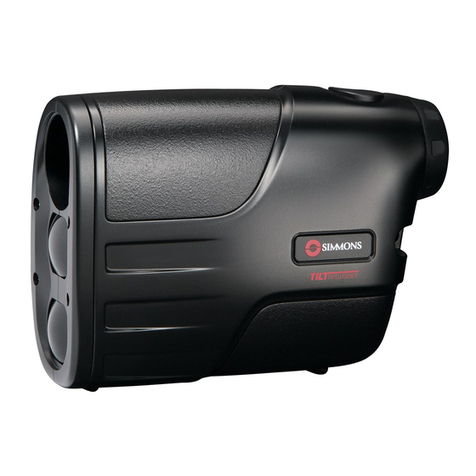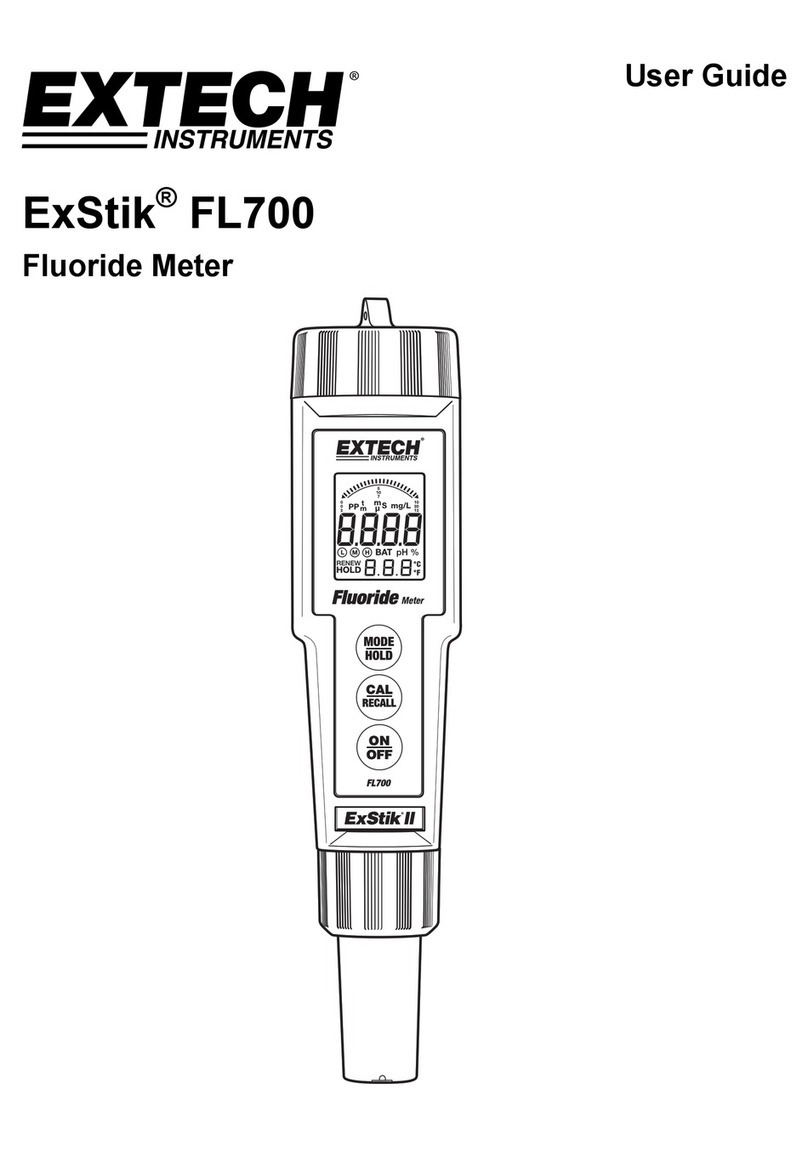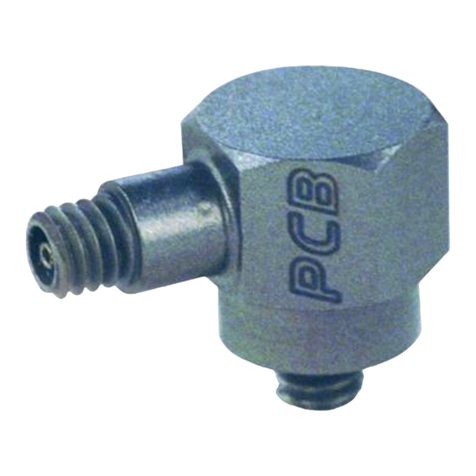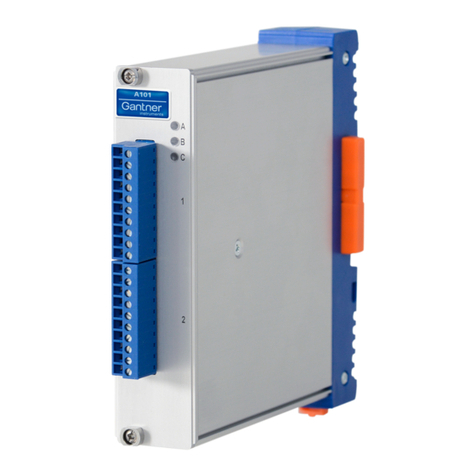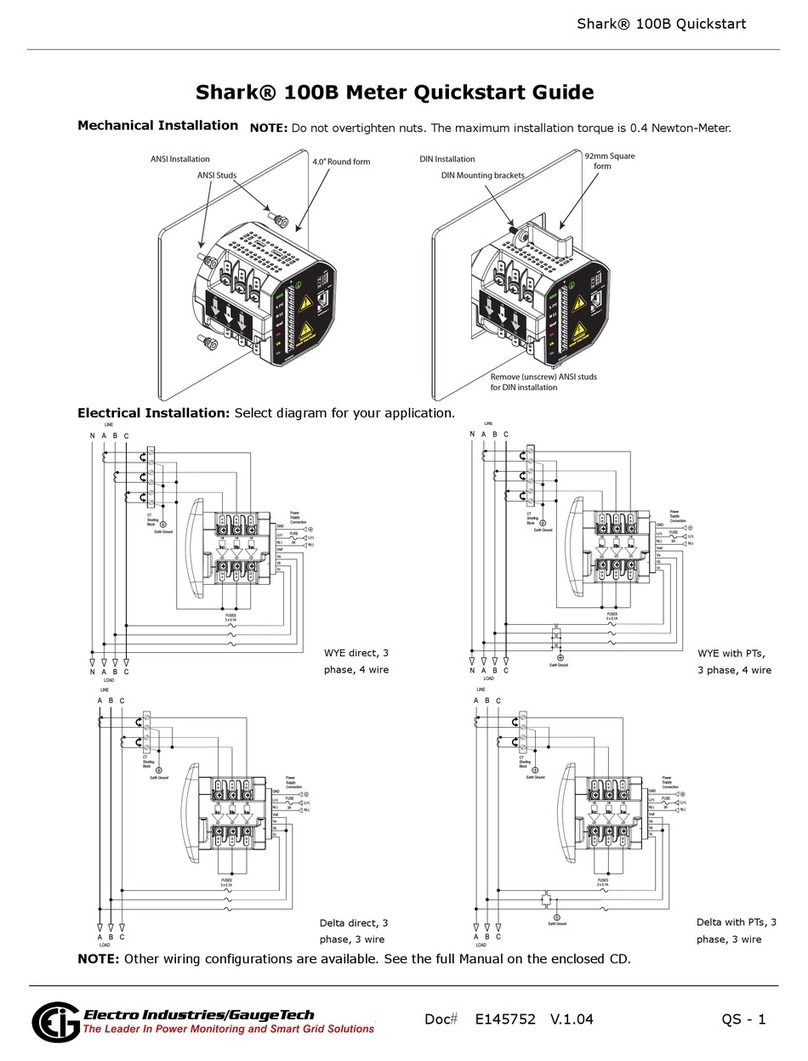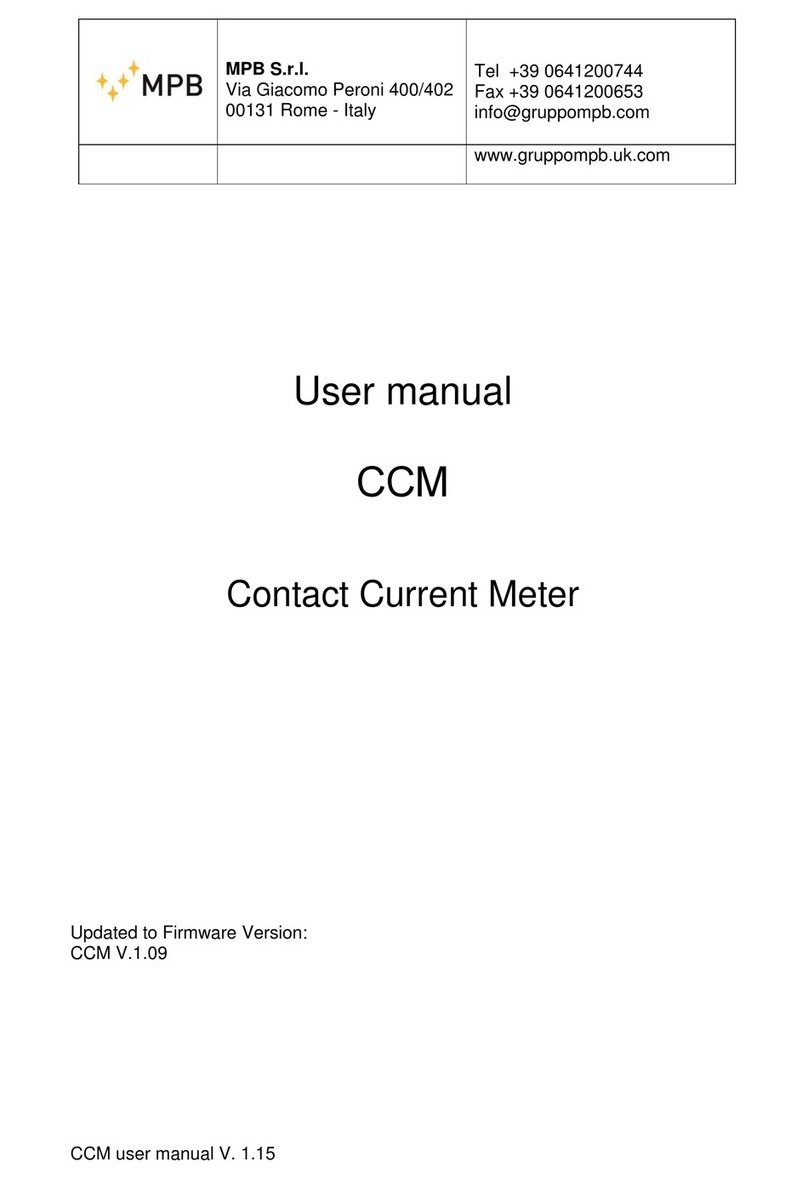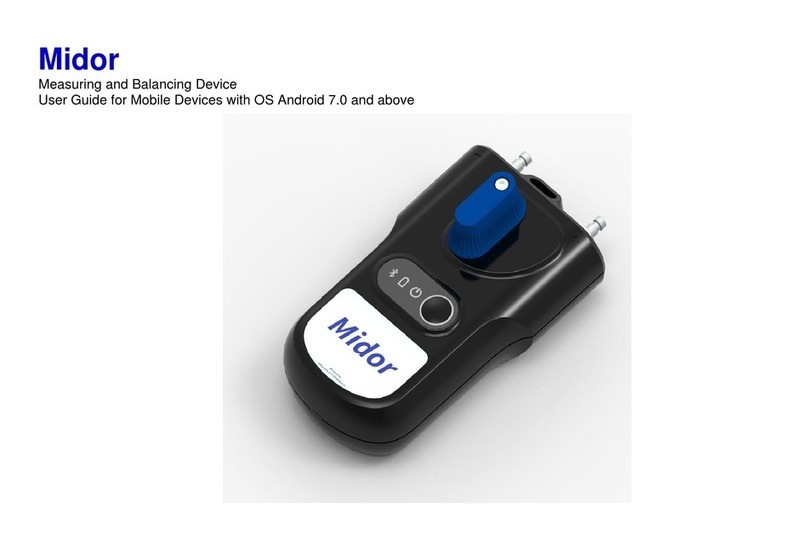Thoth Technology Argus 2000 User manual

Argus 2000 IR Spectrometer
Owner’s Manual
Document Number
OG274001
Issue
Release 1.03
© Thoth Technology, 2018. All rights reserved. This document is proprietary and should not be disseminated
without the written consent of Thoth Technology. The information contained in this document is restricted
and may be subject to international laws governing spacecraft products and services.
Thoth Technology Inc., Algonquin Radio Observatory, Achray Road, RR6
Pembroke, Ontario K8A 6W7, Canada

Page 2 of 44
Commercial In Confidence
© Thoth Technology, 2018. All rights reserved.
OG274001
Table of Contents
1PRODUCT KEY .................................................................................................... 5
2PURPOSE ............................................................................................................ 6
3SCOPE ................................................................................................................. 6
4SYMBOLS USED ................................................................................................. 6
5TRADEMARKS .................................................................................................... 6
6IMPORTANT SAFETY INSTRUCTIONS .............................................................. 7
7PACKAGE CONTENTS ....................................................................................... 7
8PRODUCT FEATURES ........................................................................................ 8
8.1Specifications ...........................................................................................................9
8.2Detector System ..................................................................................................... 10
8.3Optical Design ....................................................................................................... 13
8.4Optical Efficiency .................................................................................................. 13
8.5Angular Sensitivity ................................................................................................. 14
8.6Response to Collimated Monochromatic Laser Source ........................................ 15
8.7Functional Design.................................................................................................. 15
8.8Applications ........................................................................................................... 17
8.8.1Observing atmospheric gas and mineral species.................................................................17
9GROUND SYSTEM ELECTRONICS SETUP ..................................................... 22
10ARGUS GSE TEST APPLICATION ................................................................... 22
10.1Argus Status Message ............................................................................................23
10.2Adjusting Spectrum Pixel Range...........................................................................23
10.3Commanding the Instrument Settings ..................................................................23
10.4Data Logging .........................................................................................................24

Page 3 of 44
Commercial In Confidence
© Thoth Technology, 2018. All rights reserved.
OG274001
10.5Communications....................................................................................................24
11INTEGRATION ................................................................................................... 24
11.1Power Interface ......................................................................................................24
11.2Communications Interface ....................................................................................24
11.3Timing of Spectra Acquisition and Co-Adding Feature .......................................25
11.4Data Packet Format ...............................................................................................25
11.5Connectors .............................................................................................................28
11.6Mechanical Interfaces............................................................................................30
11.7Environment ..........................................................................................................32
12OPERATION ....................................................................................................... 33
12.1Command Format (Models 01-03).........................................................................33
12.1.2Command List .........................................................................................................................35
12.2Command Format (Model 04) ...............................................................................37
12.2.2Command List Model 04........................................................................................................40
13TROUBLESHOOTING ........................................................................................ 43
14WARRANTY ....................................................................................................... 43
14.1Disclaimer ..............................................................................................................44

Page 4 of 44
Commercial In Confidence
© Thoth Technology, 2018. All rights reserved.
OG274001
Release Notes
Issue Revisions Date
1.01
1.02
1.03
Draft for release.
Revised, corrected and enlarged
Revised
1 December 2017
16 March 2018
15 August 2018

Page 5 of 44
Commercial In Confidence
© Thoth Technology, 2018. All rights reserved.
OG274001
1 Product Key
The product code format for the Argus instruments described in this manual is:
ARGUS2000XYZ-NN.
The code descriptions are as follows:
Table 1: X Letter Code Key
Letter Code Description
A Aluminum optics
G Gold optics
S Space certified
N UAV grade
Table 2: Y Letter Code Key
Letter Code Description
U Unit only (kit excluded)
K Kit included
Table 3: Z Letter Code Key
Letter Code Description
L Standard range
E Extended range

Page 6 of 44
Commercial In Confidence
© Thoth Technology, 2018. All rights reserved.
OG274001
Table 4: NN Number Code Key
Number Code Description
01 700 nm – 1150 nm range
02 1000 nm –1650 nm range
03 1240 nm – 2000 nm extended range
04 1730 nm – 2200 nm extended range
2 Purpose
The purpose of this guide is to provide explanations and procedures for installing, operating,
maintaining and troubleshooting the Argus 2000 IR Spectrometer.
3 Scope
This document provides safety guidelines, setup information, operating instructions,
troubleshooting procedures and interface and technical specifications for the Argus 2000 IR
Spectrometer.
4 Symbols Used
The following symbols are used in this document.
CAUTION
Cautions identify conditions or practices that could result in damage to the
instrument or other equipment.
5 Trademarks
Argus is a registered trademark of Thoth Technology Inc.
!

Page 7 of 44
Commercial In Confidence
© Thoth Technology, 2018. All rights reserved.
OG274001
6 Important Safety Instructions
CAUTION
This guide contains important safety instructions that should be followed during
handling, installation and operation of this product. Be sure to read and understand
these safety instructions prior to handling.
Before installing or using this product, read all instructions and cautionary markings located
in this guide.
The instrument should be handled with gloves in a suitable clean room environment. Care
should be taken not to contact optical surfaces or instrument corners.
Do not attempt to open or unseal the unit. This product contains no serviceable parts.
The instrument shall be accommodated in a temperature and humidity controlled clean room
of cleanliness class no worse than 100,000 during handling, assembly, integration and test.
Anti-static grounding procedures must be observed when handling the instrument or
interface electronics. Care should be taken to align connector keys prior to insertion of
instrument interface.
Do not shock the instrument physically or expose this unit to liquids of any type.
7 Package Contents
The Argus instrument and GSE Kit includes the items shown in Figure 1 and itemized in
Table 5.
!

Page 8 of 44
Commercial In Confidence
© Thoth Technology, 2018. All rights reserved.
OG274001
Figure 1: Argus Instrument and GSE Kit.
Table 5: Argus GSE Kit Contents
Item Location (Figure 1) Description
1 Center Argus unit
2 Top left Shipping case
3 Top right Argus ground test display laptop
4 Bottom Left Argus power and communications interface
cable, example electrical and mechanical
mounting hardware.
5 Bottom Center Laptop serial interface USB adapter
6 Bottom Center Right Argus power USB adapter (5V)
7 Bottom Center Left Laptop power module
8 Bottom Right Laptop mains power cable (NEMA 5-15)
8 Product Features
The Argus spectrometer operates in the near infrared band in the standard range or in extended
range versions. For instrument spectral variations please see the product key. Argus features a
surface resolution of approximately 1.6 km when deployed in Low Earth Orbit (LEO). The
device uses a detector array of 1x256 elements that is actively cooled. Each pixel has a native
radiometric resolution of 10-bits. For models with numbers 01-03 resolution may be enhanced to

Page 9 of 44
Commercial In Confidence
© Thoth Technology, 2018. All rights reserved.
OG274001
13-bit performance by utilizing the integrations setting to co-add successive spectra. The device
includes a microcontroller, which controls the instrument’s components. The device operates
typically in a continuous single-pixel scanning mode with approximately 100 illuminated spectral
channels.
8.1 Specifications
The technical specifications for Argus 2000 are summarized in Table 6, below.

Page 10 of 44
Commercial In Confidence
© Thoth Technology, 2018. All rights reserved.
OG274001
Table 6: Technical Specifications, Argus 2000 Spectrometer
Argus 2000 Specification
1. Type Grating spectrometer
2. Configuration Single aperture spectrometer
3. Field of View 0.15º viewing angle around centered camera boresight with 15mm
fore-optics
4. Mass ~280 g
5. Accommodation 46 mm x 80 mm x 80 mm
6. Operating Temp. -20ºC to +40ºC operating temperature
7. Survival Temp. -25ºC to + 50ºC survival temperature
8. Detector InGaAs diode arrays with Peltier cooler
9. Grating 300 g/mm
10. Electronics microprocessor controlled 10-bit ADC (co-adding feature to enhance
precision to 13-bit, models 01-03), 3.6-4.2V input rail 250mA-1500mA
(375mA typical)
11. Operational Modes –Continuous cycle, constant integration time with co-adding feature
–Adaptive Exposure mode
12. Data Delivery Fixed length parity striped packets of single or co-added spectra with
sequence number, temperature, array temperature and operating
parameters
13. Interface Serial interface RS232 protocol
14. Spectral Channels 100 (typical)
15. Integration Time 500 μs to 4.096 sec
16. Handling Shipped by courier in ruggedized carrying case
8.2 Detector System
A linear gallium arsenide (InGaAs) photodiode array with high-quantum efficiency pixels in the
infrared detect radiation emitted for a 1.5 km2surface tile, assuming LEO orbit altitude of 600
km, that has been divided spectrally by the grating optics. The array is a hybrid InGaAs and
CMOS acitve-pixel readout electronics in which the photo-current is buffered, amplified and
stored. Channels are differentially sampled as a form of double correlated sampling. Two values
of feedback capacitor may be selected (the HIGH setting enhances dynamic range, the LOW
setting increases sensitivity). Typical device quantum efficiencies are shown in the figures below.

Page 11 of 44
Commercial In Confidence
© Thoth Technology, 2018. All rights reserved.
OG274001
Figure 2: Detector Quantum Efficiency (1.7m device).

Page 12 of 44
Commercial In Confidence
© Thoth Technology, 2018. All rights reserved.
OG274001
Figure 3: Detector Quantum Efficiency (2.2 m device).

Page 13 of 44
Commercial In Confidence
© Thoth Technology, 2018. All rights reserved.
OG274001
Figure 4: Quantum efficiency of 2.6m detector measured at 20oC
8.3 Optical Design
The instrument is a single-scan pixel type observing a square surface tile and deriving
simultaneous independent measurements of the surface spectral emission. The fore optics
comprises a telescope lens system, field stop and mirror to provide a collimated image of the
surface tile onto the reflective grating. The reflective grating reflects a spectrally divided image (in
the vertical plane) onto another mirror that focuses the first spectral order of the surface tile
image onto the detector. The particular optical configuration is determined by Thoth’s custom
design tool. Spectrometers may be customized for particular spectral ranges or resolution by
choice of grating type and optical element placement.
8.4 Optical Efficiency
The typical optical efficiency of Argus is shown in Figure 5 as a function of wavelength against a
NIST traceable source. The variation arises because of the device’s approximately constant
quantum efficiency over this wavelength range. Argus instruments require assembly to high
tolerances and are individually tuned to optimize performance. Consequently, the absolute
radiometric calibration will vary from instrument to instrument. Instruments can be ground
calibrated for absolute radiance by using a calibrated light source viewed from a range of at least

Page 14 of 44
Commercial In Confidence
© Thoth Technology, 2018. All rights reserved.
OG274001
12 meters and a 5 Degree of Freedom (DOF) kinematic mount. However, it is our experience is
that due to alignment difficulties and variation between test lamps and solar insolation that results
are only accurate to approximately 10%. Characteristic space radiance data is given in section
8.8.1.
1.2 1.3 1.4 1.5 1.6 1.7
x 10-6
3
3.5
4
4.5
5
5.5
6x 10-7
Wavelength
Joules per Count
Calibration Results using Datafile: lampCanXProcData.log
Figure 5: Spectrometer Energy Conversion Efficiency (1.6 ms exposure) against
NIST traceable standard screen and source (typical results).
8.5 Angular Sensitivity
The angular sensitivity in response to a 1523 nm collimated gas laser is shown in Figure 6 for the
standard grade Argus instrument. The full-width-half-maximum is estimated at 0.15o. At a typical
LEO orbital height of 600 km, this corresponds to a surface tile of length 1.57 km.

Page 15 of 44
Commercial In Confidence
© Thoth Technology, 2018. All rights reserved.
OG274001
00. 1 0.2 0. 3 0.4 0.5 0.6
100
200
300
400
500
600
700
800
900
1000
Figure 6: Angular Response in Counts vs. Angle in Degrees for a standard Argus unit
(1.6 ms exposure to 1523 nm laser. FWHM estimated as 0.15o).
8.6 Response to Collimated Monochromatic Laser Source
Figure 7 shows a typical instrument response to a 1050 nm collimated laser source.
50 100 15 0 20 0 250
0
100
200
300
400
500
600
700
800
900
100 0
Figure 7: Response to Laser Source in Counts (1.6 ms exposure to 1050 nm laser, standard
Argus).
8.7 Functional Design
The system utilizes a microprocessor for the sequencing and processing of spectra. A functional
diagram for the instrument is provided in Figure 8.

Page 16 of 44
Commercial In Confidence
© Thoth Technology, 2018. All rights reserved.
OG274001
Order Filters Spatial Filter Diffractive
Element
Collimating
Optics
Input Optics
Focussing
Optics Detector
Source
Detector
Driver
CPU ADC Clock
Serial
Interface2
Serial
Interface1
Power
Regulation
Cooler
Digital IO
Packet
Generator
Command
Interpreter
DAQ Timing
Temperature
Sensor
Parameter
Storage
EEPROM
Storage
Power cycle
Detection
Cooler
Driver
GSE
Temp Driver
Figure 8: Argus Functional Diagram (optical train shown in blue; cooler components in red,
electronics in brown and software functions in green; optional secondary serial interface
illustrated).

Page 17 of 44
Commercial In Confidence
© Thoth Technology, 2018. All rights reserved.
OG274001
8.8 Applications
8.8.1 Observing atmospheric gas and mineral species
Figure 9: Industrial Greenhouse Gas Emitters.
Argus can be utilized to map the spatial variation of greenhouse gases and to identify rocks and
minerals with known reflectance spectra. Measurement interpretation requires spacecraft attitude
information for an accurate geolocation of the spectrometer surface pixel, application of a
radiative transfer retrieval algorithm and knowledge of surface cloud conditions and topography.
Utilizing a near nadir-pointing configuration, the spectrometer can record infrared radiation
emitted from the Earth's surface and atmosphere to space. By application of optical absorption
spectroscopy, absorption and, consequently the column densities of particular atmospheric gas
species may be obtained. The simplest methods such as differential optical absorption
spectroscopy (DOAS) are similar to computing the intensity ratio between closely spectrally
associated absorption and non-absorption features. For mineralogical survey and by application
of reflectance spectroscopy, different rock and mineral types may be identified where the
atmosphere. Reflectance spectroscopy has found application in space exploration and is used
routinely on Earth for detection and characterization of organic molecules in the laboratory. For
biological exploration, organic molecules containing aliphatic O-H, C-H, and C-O groups exhibit
absorption bands in the 1700 and 2400 nm regions. Detection limits for these types of organic
compounds in laboratory equipment are on the order of a few tenths of one percent. Figure 10
shows reflectance spectra for typical rock types. Iron content may be inferred from the strong
absorption feature in the lower wavelength region. The absorption of infrared radiation by
carbonates has a distinct signature that varies with rock type, enabling classification.

Page 18 of 44
Commercial In Confidence
© Thoth Technology, 2018. All rights reserved.
OG274001
Figure 10: Reflectance spectra of four types of carbonates.
Space flight experience with a standard Argus indicates that the instrument acquires excellent
nadir spectra of reflected sunlight from a 1030 sun synchronous orbit with an exposure time of
approximately 150 ms. Other orbital options can be utilized; however, variation in nadir and solar
angles or spacecraft altitude can effect the scene significantly and increase retrieval complexity.
The instrument’s integration time is programmable. This enables integration times to be adjusted
for observation conditions, scene altitude and orbital parameters. For good signal-to-noise it is
advantageous to set the integration time to ensure that the spectral features to be observed
correspond to instrument counts of approximately two thirds of the dynamic range of the
instrument.
Table 7, below, lists the atmospheric gas species have absorption features in the spectral interval
1000 nm - 2.4 m). In this spectral region water vapor dominates the spectra and, consequently,
the radiative forcing and radiation budget. Carbon dioxide is visible and well isolated at 1.57 and

Page 19 of 44
Commercial In Confidence
© Thoth Technology, 2018. All rights reserved.
OG274001
1.61 m and is clearly observable in space data. At these wavelengths absorption by carbon
dioxide is approximately one hundred times greater than that of water vapour and a number of
spectral pixels are well correlated with CO2 absorption. Data from the first spaceflight of Argus
indicate that CO2 absorption that is stronger significantly than predicted by a linear radiative path
and assuming a single-surface reflection. CO2 absorption is also enhanced by the presence of
clouds and aerosols. Retrievals to invert column absorption of CO2 to CO2 atmospheric
concentration must account for topographical effects in addition to enhanced absorption forcing
by clouds and aerosols.
Oxygen can also be observed; however, a shorter integration time is required than for carbon-
dioxide observation. Carbon Monoxide (CO) and Hydrogen Fluoride (HF) is not detected in
spectra because of feature contamination by other absorbing gases (water vapor). There is some
evidence of methane (CH4) absorption at 1.63 m; however, it is contaminated with carbon-
dioxide features. The extended range detector is recommended for the observation of methane
(CH4) features at 2.25 m. The integrated intensity is highly correlated with surface albedo.
Spectra contaminated by cloud cover show typically reduced gas absorption, a blackbody-like
response and increased intensity. Results of spectra acquired over Canada in 2008 are shown
below in Figure 11. We estimate that the peak radiance observed in this scene is equivalent to
0.04 Wm2sr-1 nm-1.

Page 20 of 44
Commercial In Confidence
© Thoth Technology, 2018. All rights reserved.
OG274001
Table 7: Absorbing Species
Gas Absorption Strength
Oxygen (O2) 1.25m (10-24 mol.cm-2)
Carbon Dioxide (CO2) 1.57m (10-23 mol.cm-2)
1.61m (10-22 mol.cm-2)
2.05m (10-21 mol.cm-2)
Water (H2O) 900 nm (10-21 mol.cm-2)
1.2m (10-21 mol.cm-2)
1.4m (10-19 mol.cm-2)
Carbon Monoxide (CO) 1.63m (10-22 mol.cm-2)
Methane (CH4) 1.67m (10-20 mol.cm-2)
2.25m (10-20 mol.cm-2)
Hydrogen Fluoride (HF) 1.265m (10-19 mol.cm-2)
Table of contents
Popular Measuring Instrument manuals by other brands
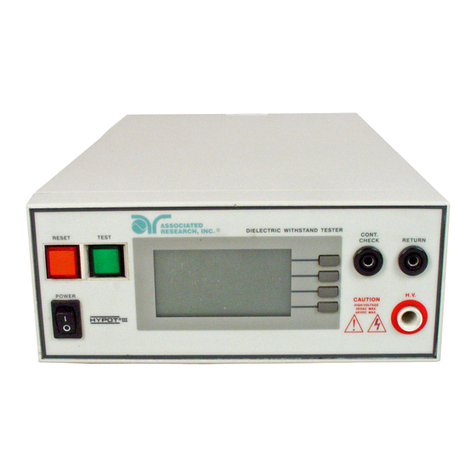
Associated Research
Associated Research HYPOT III 3705 Operation and service manual

Anritsu
Anritsu HA-100 Series instruction manual
Inficon
Inficon Micro GC Fusion 2-Module operating manual
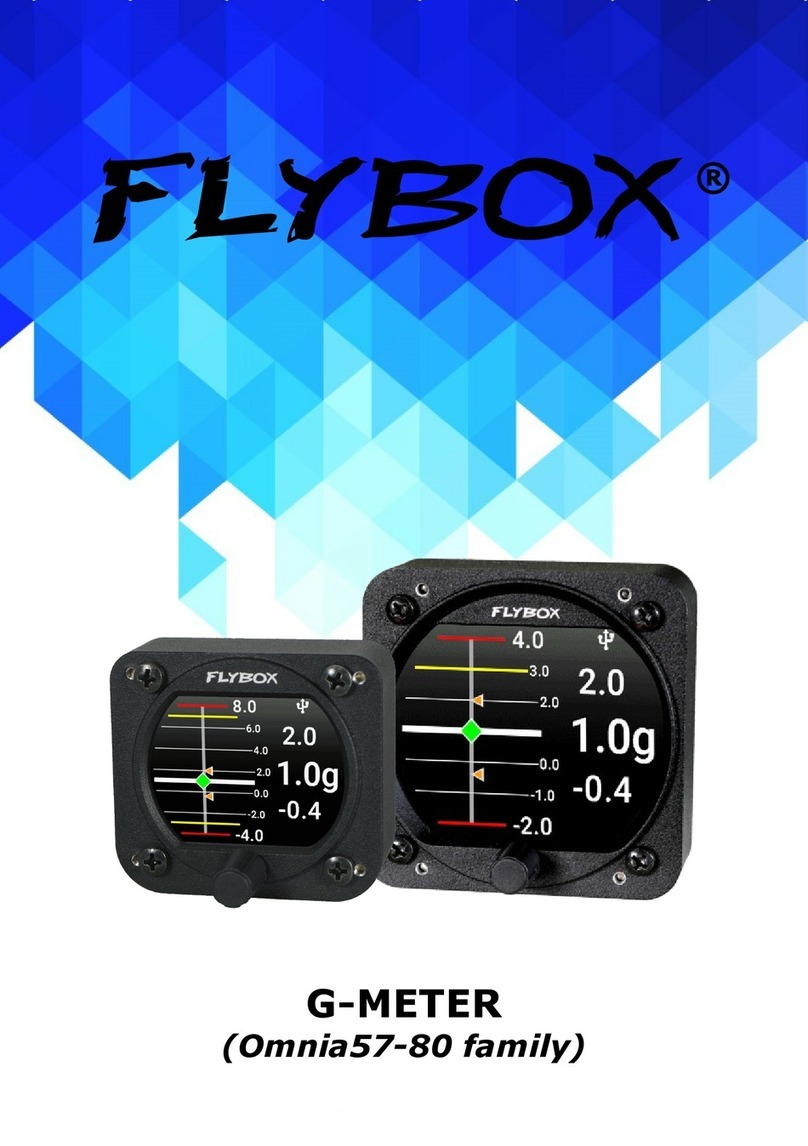
Flybox
Flybox Omnia57 G-METER Installation and user manual
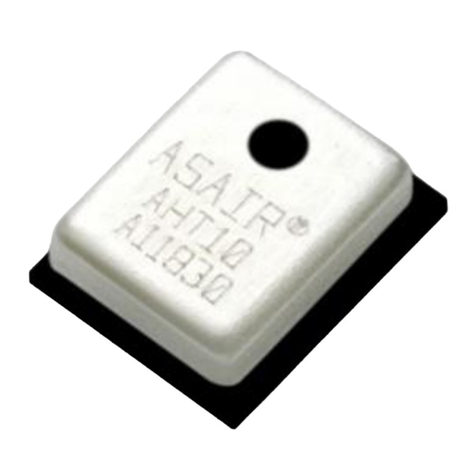
ASAIR
ASAIR AHT10 Technical manual
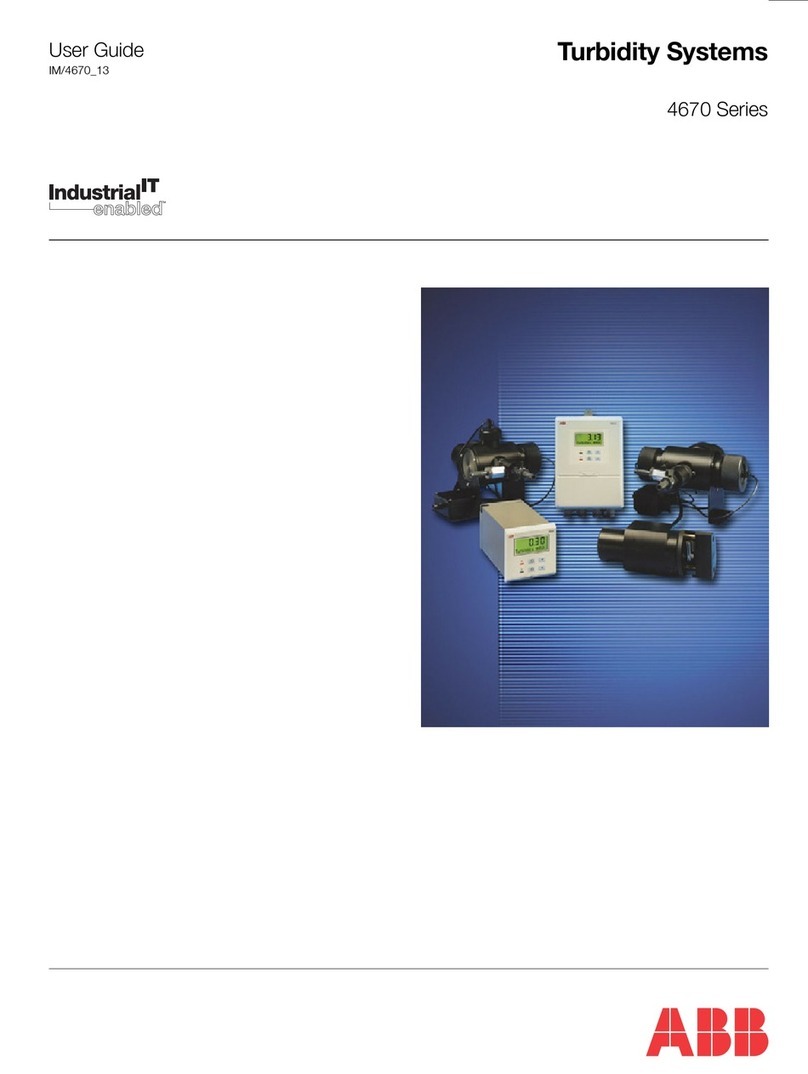
ABB
ABB 4670 Series user guide
